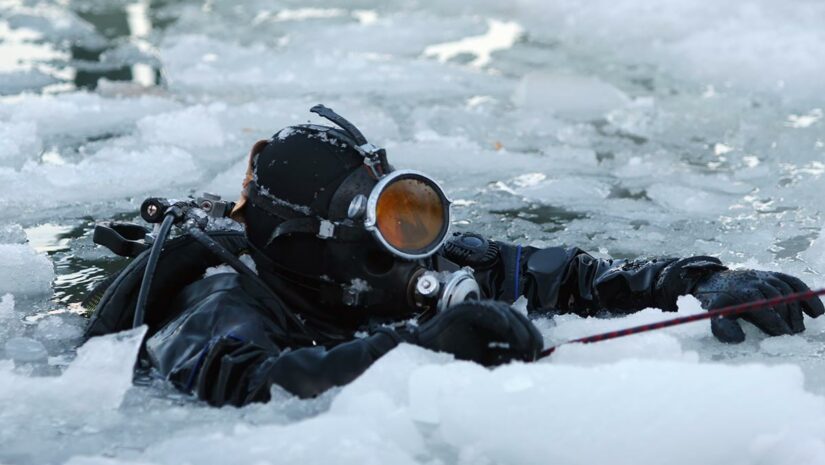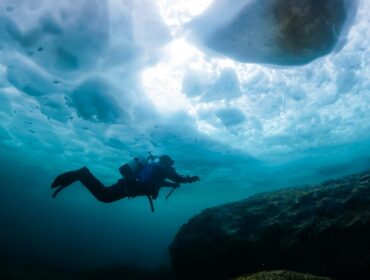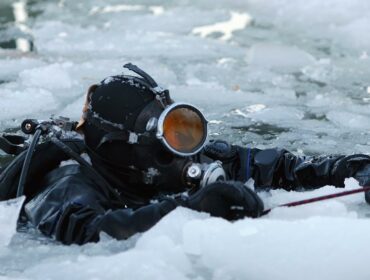Ice Diving at McMurdo Sound, Antarctica
Antarctica conjures up images of lots and lots of snow, ice, glaciers, and penguins, and there is very little to see, but one thing you would never imagine doing here is scuba diving. Well, think again! Even though the freezing temperatures that routinely plunge below -40°C (-40°F) and hurricane-force winds have created extreme conditions that have resulted in a land virtually devoid of life. No insects, plants, or significant terrestrial flora or fauna exist here. Yet, life thrives below the thick ice in the icy waters, and McMurdo Sound in the Ross Sea has some of the most spectacular diving in the World.
Most of the diving in McMurdo takes place during the summer months of September to February (especially December and January), when temperatures are more bearable, around 30°F (−1 °C). Divers break through the 1.3-3m (4-10ft) thick ice using boring tools like a diesel-powered auger, ice saws, ice chippers, and even high explosives to make a hole about 1.3 m (4ft) in diameter and the portable hut is placed over this. The hut placed over the hole is mainly to keep the hole from freezing again and provides divers with a warm place to sit up. With freezing temperatures and winds outside the portable hut, exposed Scuba equipment risks becoming inoperable if not carefully controlled.
The water below the thick layers of ice remains at a near-constant temperature of -1.8° C (28.8° F), and once under, divers can experience an unbelievable visibility of 300m (990 ft)! Once a diver’s eyes adjust to the one percent of sunlight that makes it through the ice, they describe the experience as flying over a darkened landscape of hills, valleys, and sheer cliffs, and if one were to look up a spectacular glowing blue cover with a moon-like crater that is the ice and hole, is their reward.
McMurdo Sound divers encounter colorful examples of sea life, including bright yellow cactus sponges, green globe sponges, starfish, sea urchins, jellyfish, sea anemones, and some brilliant soft coral. One can even spot an Emperor Penguin gracefully swimming to find a meal of squid, fish, or crustaceans. Diving at McMurdo Sound requires a high level of skills and proficiency in drysuit diving.



